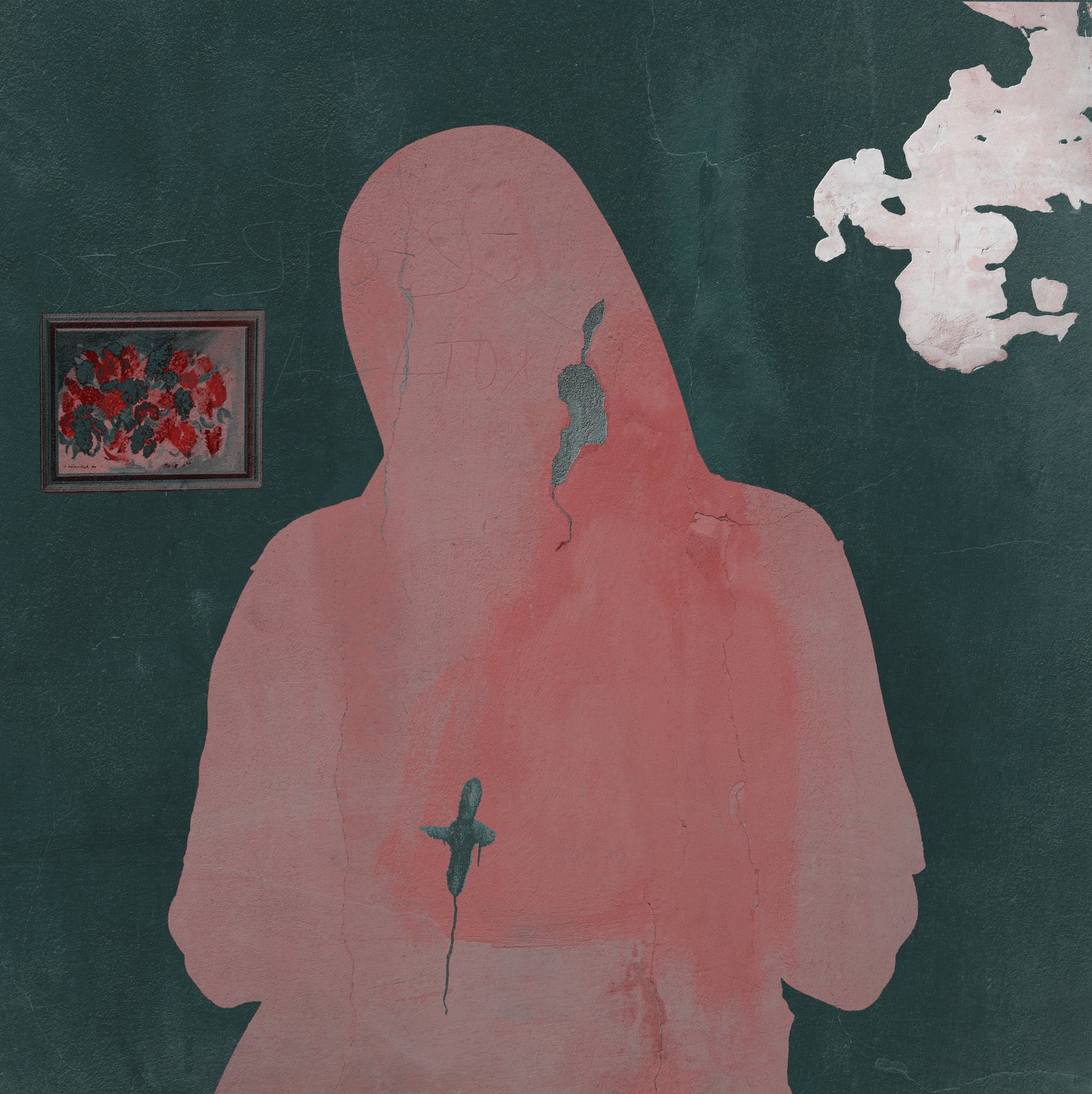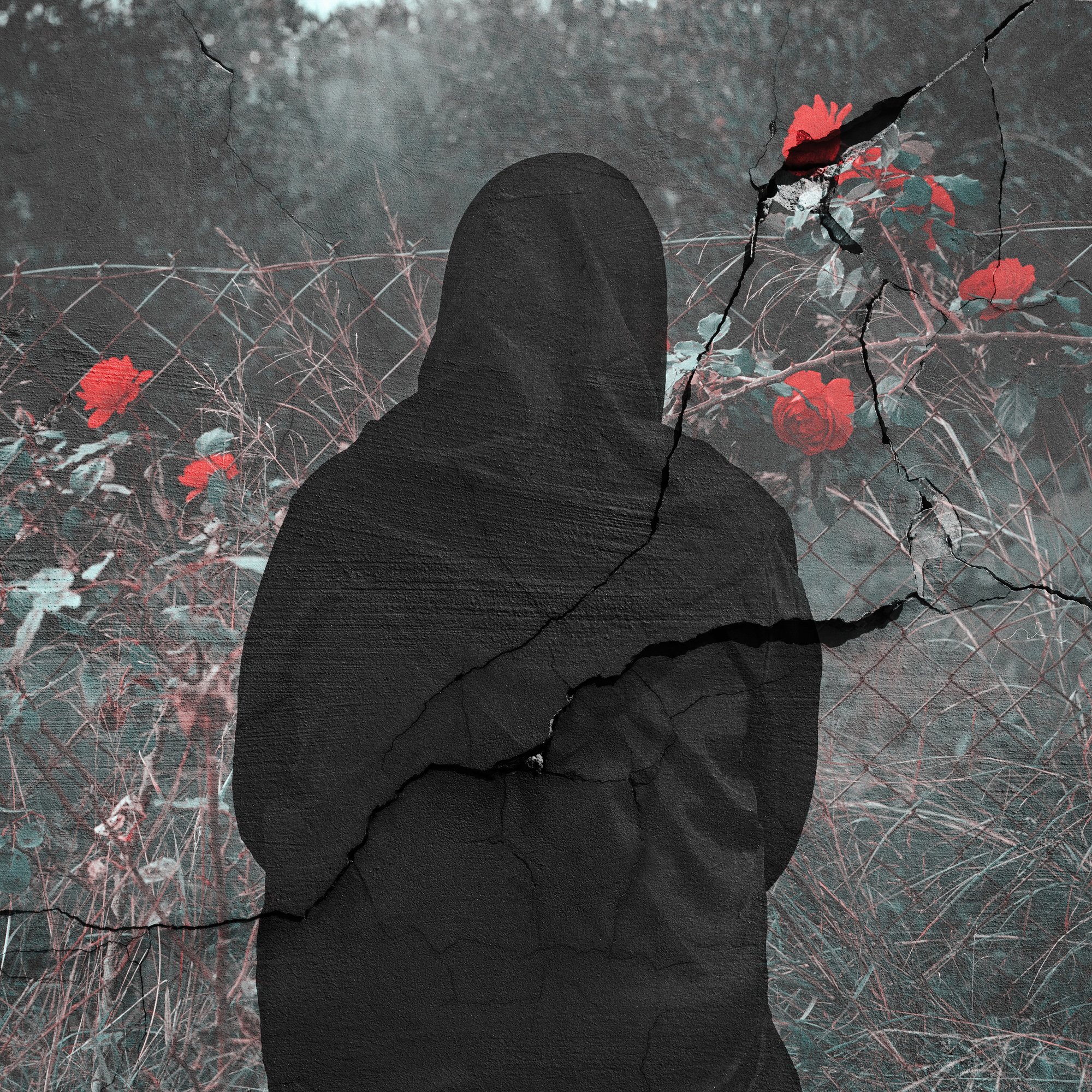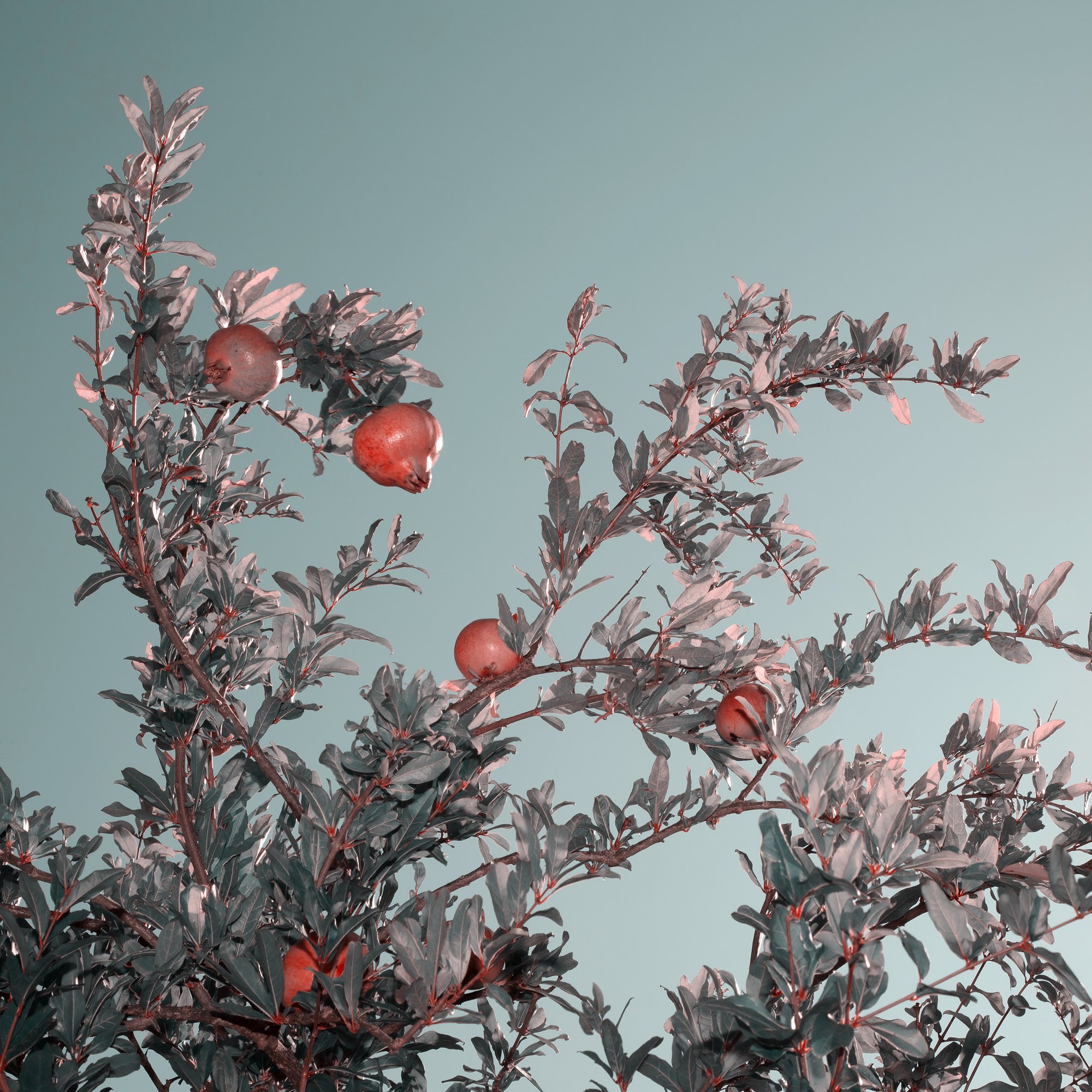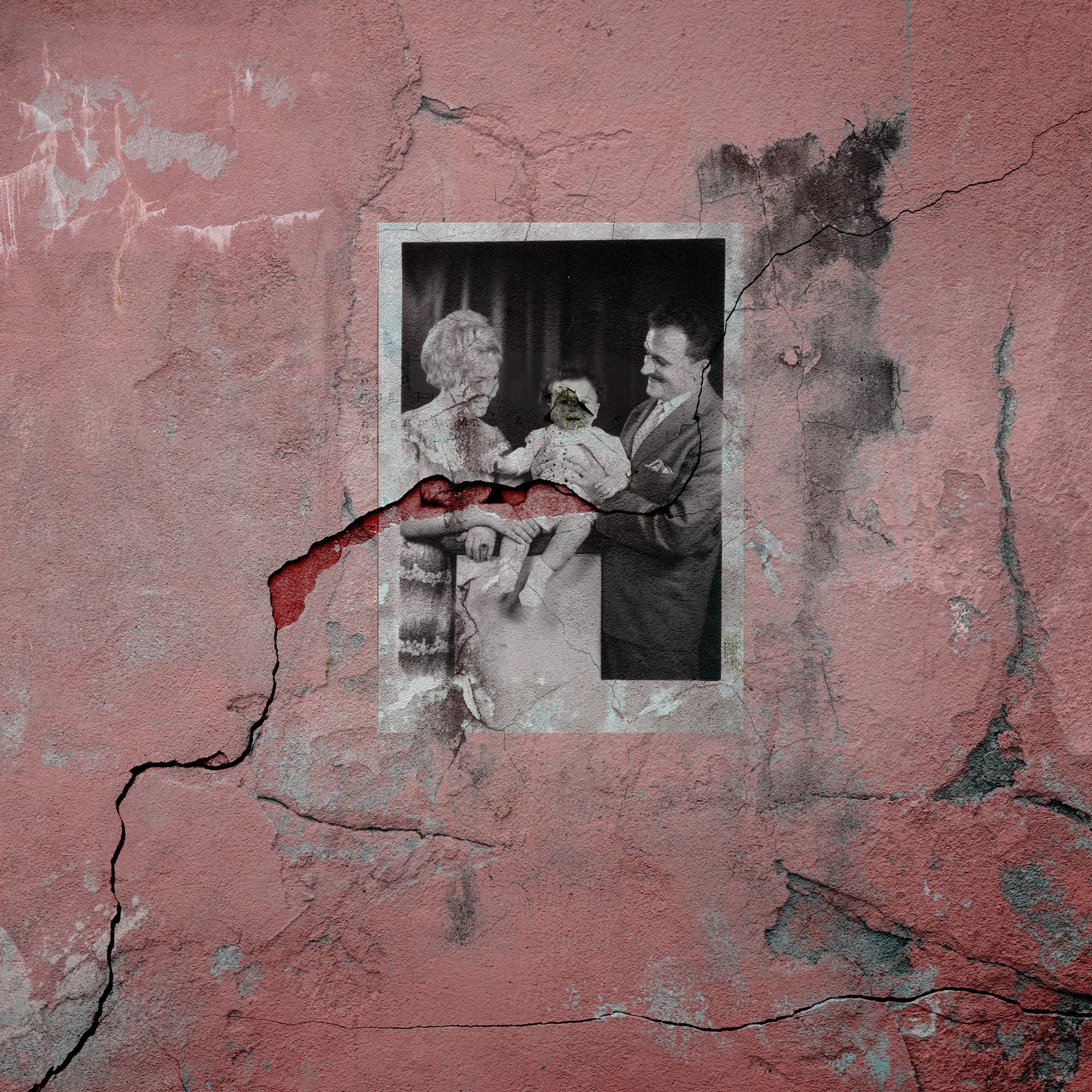The Truth is in the Soil
Solo show by artist Ioanna Sakellaraki
Belfast Exposed Gallery, Belfast Northern Ireland
3 March- 21 May 2022
Do not speak to people about death Do not speak words that disappear like smoke
You cannot look at death
When (you think you look at death)
what you find is ashes only.”-Naoki Sakai, Translation and Subjectivity: On Japan and cultural nationalism
For the first time The Truth is in the Soil and The Interval of Unreason, distinctive chapters of the same story, come together and are presented to the audience as one exhibition. The themes of memory and loss, fiction and autobiography, the private and collective are the fil rouge of all of the artist's body of work. Ioanna Sakellaraki’s conceptual practice positions photography as ontological proposition within a nexus of fiction, collage and embroidery. She investigates the capacity of images not only to document an underlying reality, but also to endlessly extend our perception; mobilizing the domains of time and space and how a personal experience of grief becomes a universal journey through memory and memory loss.
The Truth is in the Soil started evolving five years ago, when the death of the artist's father sparked a journey back to her homeland, Greece. During the following years, Sakellaraki made several trips to the Mani Peninsula, in southern Greece, where women, since antiquity, have been called on to perform the collective grief of the bereaved. In these remote villages, elderly women named moirologists (moíra deriving from the ancient greek word for fate and lógos translating as speech) are morally responsible for grieving and leading a family through the final moments with their loved ones in a collective goodbye. The personal trauma of the death of her father and this connection to the mourners during that time became a starting point for a long-term exploration of collective grieving and ancestral rituals.
The photographic works in the gallery are fragments of a larger narrative progressing from a descriptive and informative to a more metaphorical or esoteric resolution. The exhibition begins with an image of her own grieving mother, and progresses further to images of veiled figures of the mourners who, like satellites, orbit the gallery space around the large archival image of her father riding a white horse, in his full blush of youth. Sakellaraki's series of images slowly unfold a personal yet paradoxical narrative of separation and encounter, all glued together from the experience of grief. The mourners’ silhouettes become one with the mountain ranges: silent landscapes imbued with centuries of collective history, witnesses called to preserve the universality of grief. What knowledge is there in reality and what in memory? Even the making process mirrors the idea of how our memories can be flawed: the figurative photographs themselves become the agents of performances that Sakellaraki conducts in the process of dissembling, drawing, marking, and finally re-configuring them together.
In recognizing the fascination in her homeland being a place outside of her memory, she infuses the work with Greek classical references, and some of the titles of individual images evoke specific myths, like the image of the pomegranate tree branches titled Thia Metamorfosis. In Greek Mythology the pomegranate fruit is a symbol of humanity's central beliefs and ideals, namely, life and death, rebirth and eternal life. Thia’s name actually means “holy”, a reference to the unobstructed clearness of the pure skies, as well as wisdom. The Greeks believed sight existed because of beams of light that project from our eyes, and Thia was likely associated with that specific kind of light. While looking at Sakellaraki’s images, what are we actually seeing? This image gracefully transports our thoughts somewhere spaceless and timeless, between the sky and the world. It is almost impossible to know what this photograph is of, let alone what it might mean. In calling for explanation, a photograph like this can make us feel the gap between looking, reading and knowing.
The Truth is in the Soil ends with the archive, and that is when The Interval of Unreason starts taking its shape, bringing together Sakellaraki's father's sealed photographic archives found after his death, landscapes and traditional hand stitch embroidery, performed by her and her mother. In the silence of the archive, Sakellaraki tries to grasp the texture of life from the remains left behind; on this sheet, in this box, on this clean table, and now for her eyes only. Under the starry skies and wild landscapes of the Greek island of Patmos, she begins to untangle the secret adventures of her father’s past as a sailor.
Researchers and artists enter the archive in search of a photograph, a deed or a letter that will lay the search to rest, just as life contains a “death drive” that moves us toward equilibrium and stasis. The death drive, it bears remembering, is ultimately a productive drive that attaches itself to any activity that seeks to establish an absolute origin. Driven by curiosity and captivated by the trove of an image found in her dead father’s 50-year-old archive, a vestige of a faded romance between him and another woman, Sakellaraki decides to begin this new chapter of the work during her stay on the Greek island of Patmos.
Enticed by the energy of the island and determined to follow her father’s footsteps, she explores it extensively and while in complete isolation and remoteness, she begins to envision the mysterious and uncanny images of The Interval of Unreason. While there, she is also inspired by the scriptural prophecies in the ancient Greek manuscript of the Book of Revelation, the final book of the New Testament which refers to Patmos as the “Island of Apocalypse”. Written by a Judeo-Christian author, John; the history of Patmos is an epic tale where obscure apocalyptic and prophetic visions announce an imminent end of the world. This grandiose mythological end of the world contrasts with the intimate and personal end of the world felt by the author after the loss of a loved one. The images reflect this, juxtaposing family portraits with dramatic and emotionally overwhelming landscapes covertly weaving compelling pieces of fiction into the story of a life.
Set against the backdrop of a scratched wall, the archival portrait of the father with his lover depicts them as confident poseurs gazing into each other's eyes. This intimate vision contrasts with the image in the center, of a faded rocky landscape from which is resurfacing what looks to be the back of a photograph and the image trapped in the column of a Greek temple. These images, with their vocabulary drawn from photography’s history, are made contemporary by the vibrancy of the artist’s intervention. The tactile qualities of skin and the motion of the stains and drips, create immediacy. Gradually, Sakerallaki’s extended sojourn in the space between the real and the imaginary becomes more and more evident, while her father, trapped inside her resuscitated photographs, is calling her back as a witness to a factual hidden life making a complete escape ungraspable. She is pulled to escape the reality of the image, paradoxically, through the use of photography.
On display in the exhibition, Sakellaraki combines her father’s original photographs using hand- stitching along the image edges in a form of embroidery to an organza fabric backing. When she left Greece, this embroidery was performed in collaboration with her mother. They completed the project by shipping works in progress across Europe, continuing each other’s stitches while they lived apart. The discovery of another hidden life of her father in the images and letters, only revealed fragmentarily, further challenges the established familial narrative and this tension is felt in the erratic stitching along the periphery of figures in the photos. This collaborative gesture of the two women interweaving their thread onto the images, signifies an attempt to reclaim the narrative and reimpose themselves into hidden aspects of the father’s life that were so far unknown to them. The archive once again seems to tie its subjects with death: what is found in it bears testimony, first and foremost, to everything that could not be collected but was lost.
The archival portraits of the father and the lovers (The Interval of Unreason, 2021 and 2022) emerge in contrast with the mourners' silhouettes from The Truth is in the Soil in a waltz of muted feelings. The evanescent, yet solidly present image of the father is predominantly existing in this interval, in the spaces between the observer and the observed. These artworks, constructed with a combination of new and found images derive from editing film both through manual and digital processes, presented by Sakellaraki as traces, in order to expose an aporetic interval within the archival paradigm to which the photograph belongs.
While in The Truth is in the Soil, the photographs in their silence exist to obey the rules of mourning and are a tool of control over loss, the ones from The Interval of Unreason occupy all the space of loss while exposing a caesura within the photographic archive. This caesura is an interval or unmarked spacing between the event or referent and its signification, separating the present from what it is not: an in-between time and in-between space. There is no image that provides a stable presence. There is rather a spacing that cannot be filled, a haunted twilight world out of which figures and landscapes appear and disappear in a flux between transformation and preservation.
In the aftermath of the atomic bomb in Japan, Nakagiri Masao, a member of the post-war literary group Arechi, writes of a world transformed, where nothing remained except the sight of annihilation; nothing is to be seen except ashes. Everything that had once been had suddenly disappeared. The words of Masao capture the sense of how tenuous a hold on life became, of how every certainty or gesture of response had been reduced to the ground degree zero of ashes. How then to speak and document what had passed because so little remains on which to hold? The question becomes what is the relationship between grief and memory, between death and the archive.
Every medium creates a primary illusion . The novel creates an illusion of memory; music creates the illusion of passing time; drama creates the illusion of history. Ioanna Sakellaraki implies that photography creates the primary illusion of fact. The photographic moment, in which time is suspended, challenges our linear, continuous experience of time, event and place. “Kairos” in Greek is the word expressing the restlessness of temporality; the perfect timing, the moment of truth, that fleeting moment, that comes and goes in the blink of an eye, which must be seized and not let go.
Acknowledgements
The Truth is in the Soil is generously sponsored by the Arts Council of Northern Ireland and funded by Belfast City Council.
The Truth is in the Soil has been supported by The Royal Photographic Society Bursary Award 2018 and the Sony World Photography Awards 2020.
The Interval of Unreason has been supported by the Arts Council UK through the Developing your Creative Practice Grant 2021.
The Truth is in the Soil, Ioanna's first monograph has been published by GOST Books into a hardback clothbound book which will be available from Belfast Exposed during a pre-launch event before its official launch by GOST Books in April 2022. For more information on the book, click here.












